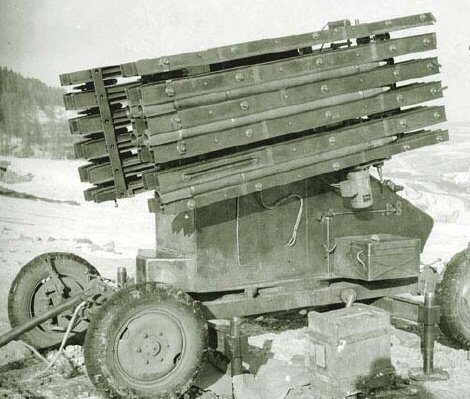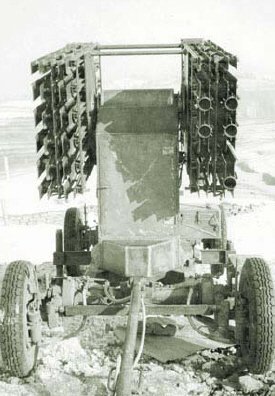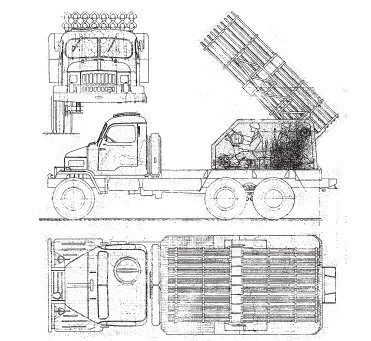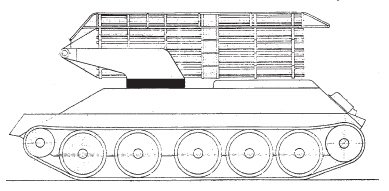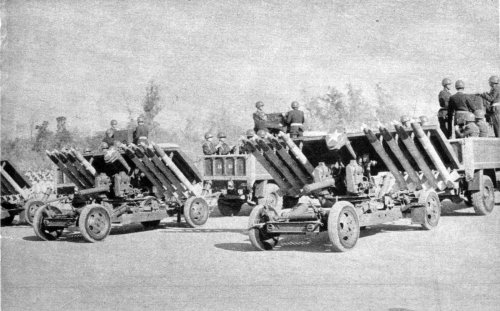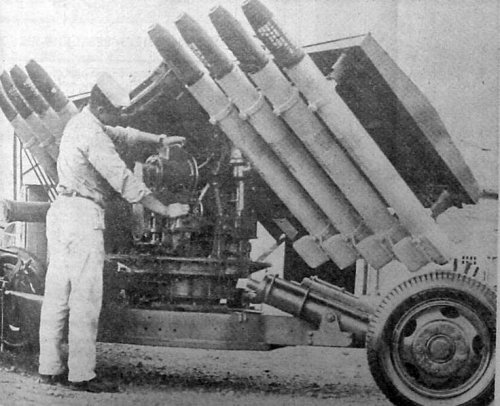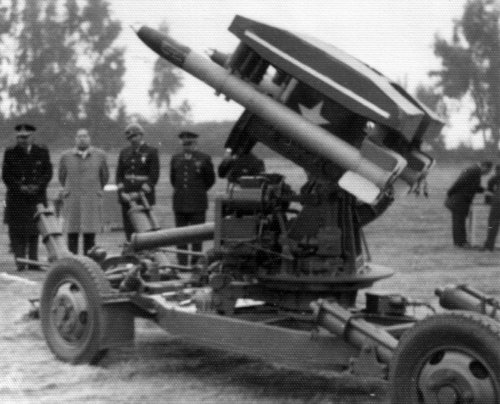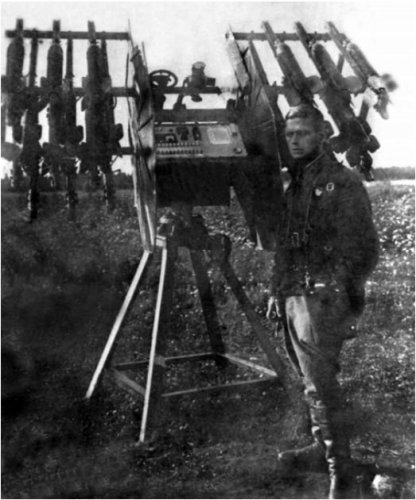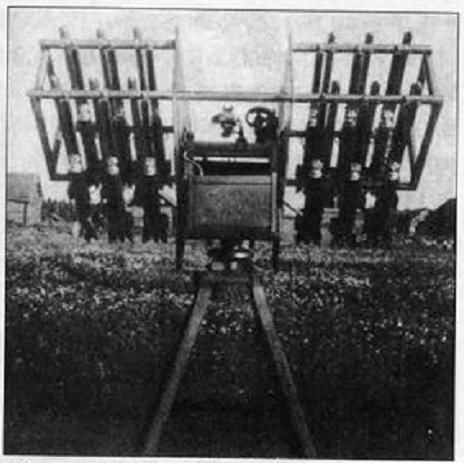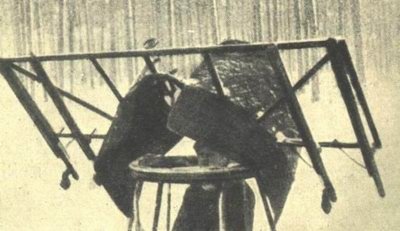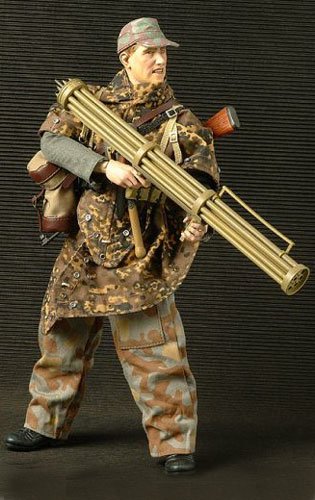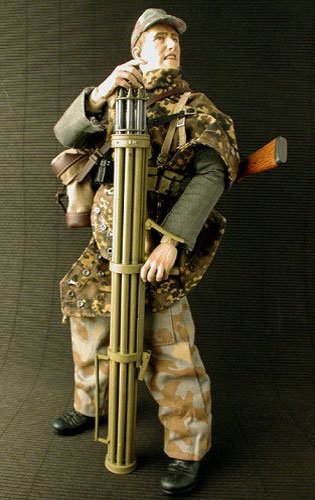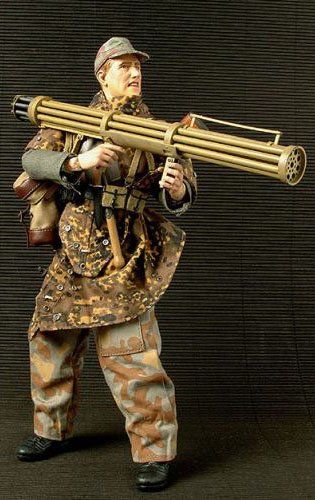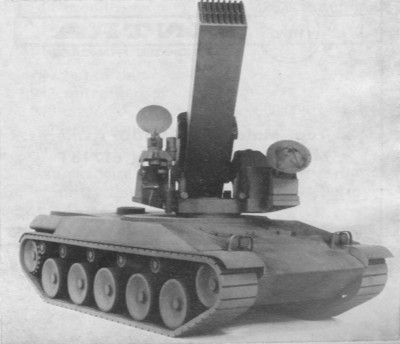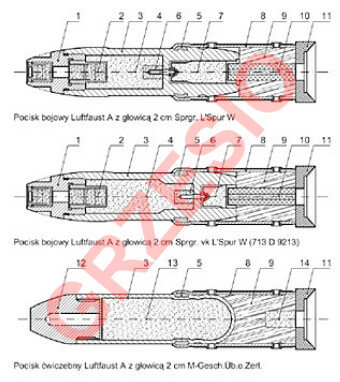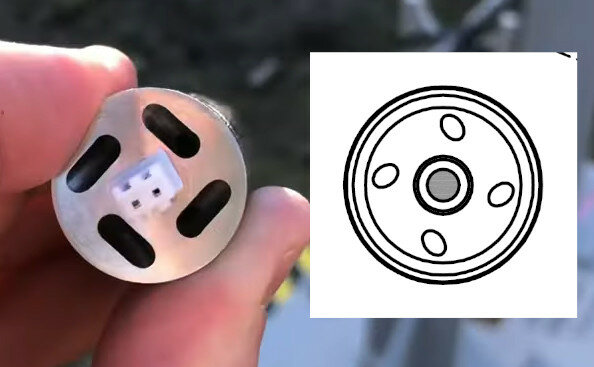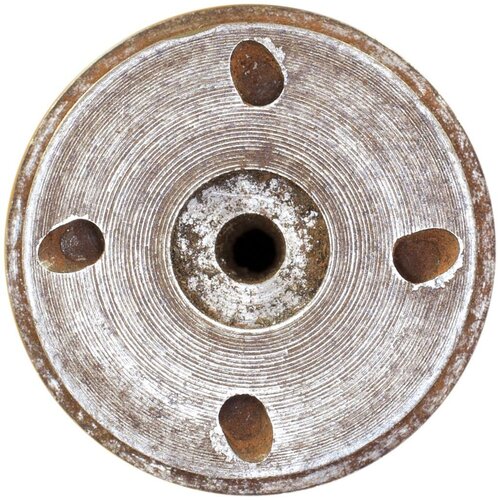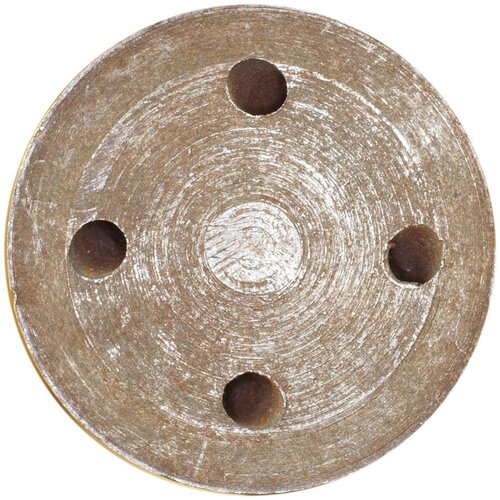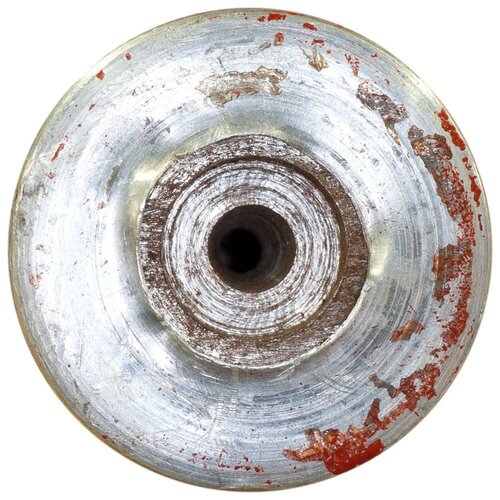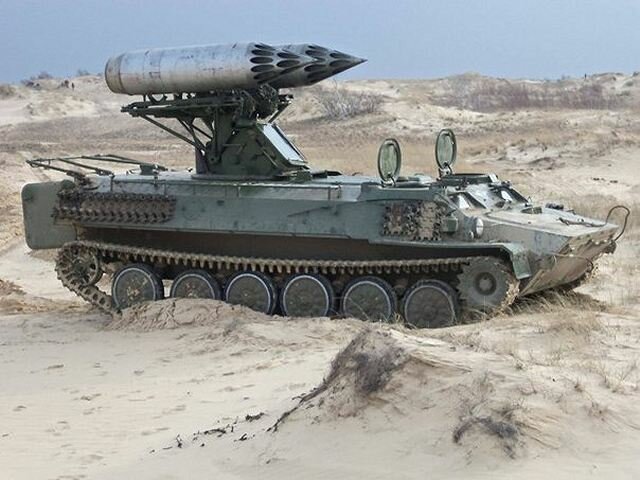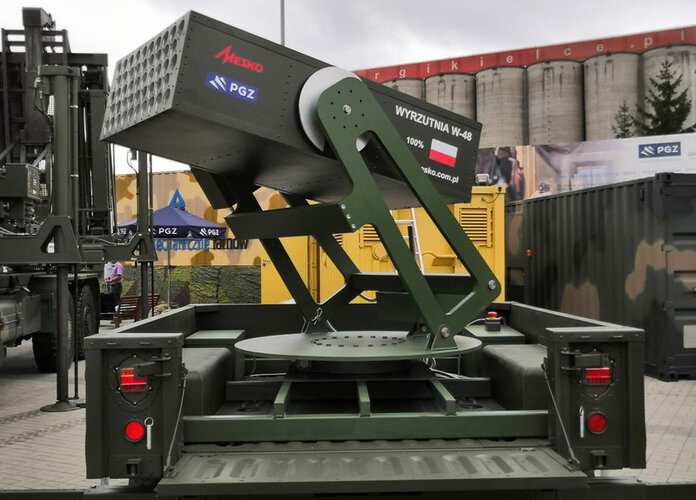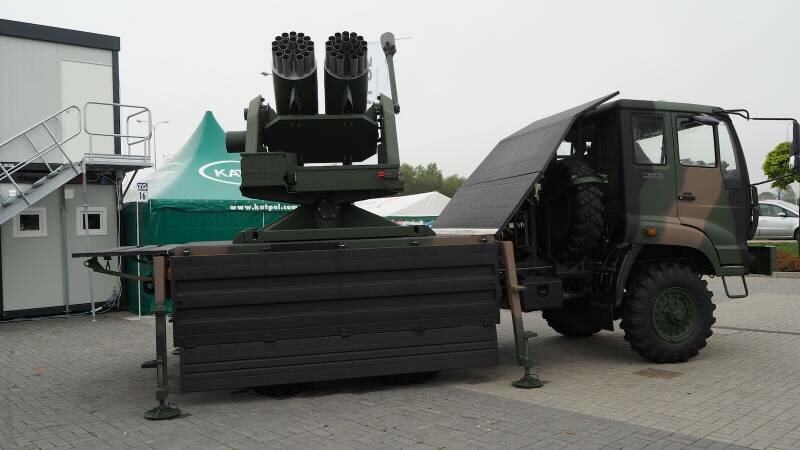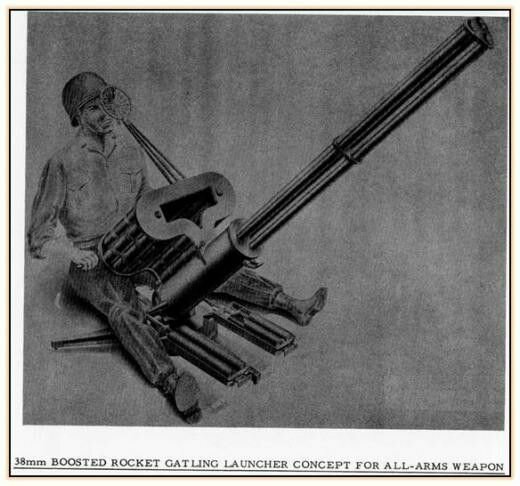Grzesio
ACCESS: Secret
2 cm Luftfaust would be completely ineffective. Especially due to awful and uncontrolled spread of rockets, reaching 20 per cent of the shooting distance. Ergo, nine rockets covered a 40 m area in the distance of 200 m, then 100 m (or more) at the intended combat distance of 500 m - hence obtaining even a single hit on an attacking fighter was a question of pure luck, not aiming. For example, by comparision to the frontal area of a P 47, the hit probability with 9 rocket salvo would be 4.5 per cent in the distance of 200 m and 1.1 per cent in the 400 m distance. So for obtaining a statistical hit 22 salvos were needed for 200 m and 91 for 400 m distance.
You can easily imagine this spread - if one fired a Luftfaust horizontally, from the shoulder in standing position, the nearest rocket could hit the ground as close as 7 meters from the shooter.
Probably salvo firing with vast number of launchers would bring some chances for success, I even encountered a mention in a Russian book that hit probability was estimated as "high" in this case - but a single hit with a 2 cm shell was still not the best way of bringing down a solid late war fighter bomber. Probably explosions of selfdestructing shells, some 300-400 m from the launcher, would be the most influential (psychologically) effect of the Luftfaust.
Regards
Grzesio
You can easily imagine this spread - if one fired a Luftfaust horizontally, from the shoulder in standing position, the nearest rocket could hit the ground as close as 7 meters from the shooter.
Probably salvo firing with vast number of launchers would bring some chances for success, I even encountered a mention in a Russian book that hit probability was estimated as "high" in this case - but a single hit with a 2 cm shell was still not the best way of bringing down a solid late war fighter bomber. Probably explosions of selfdestructing shells, some 300-400 m from the launcher, would be the most influential (psychologically) effect of the Luftfaust.
Regards
Grzesio

